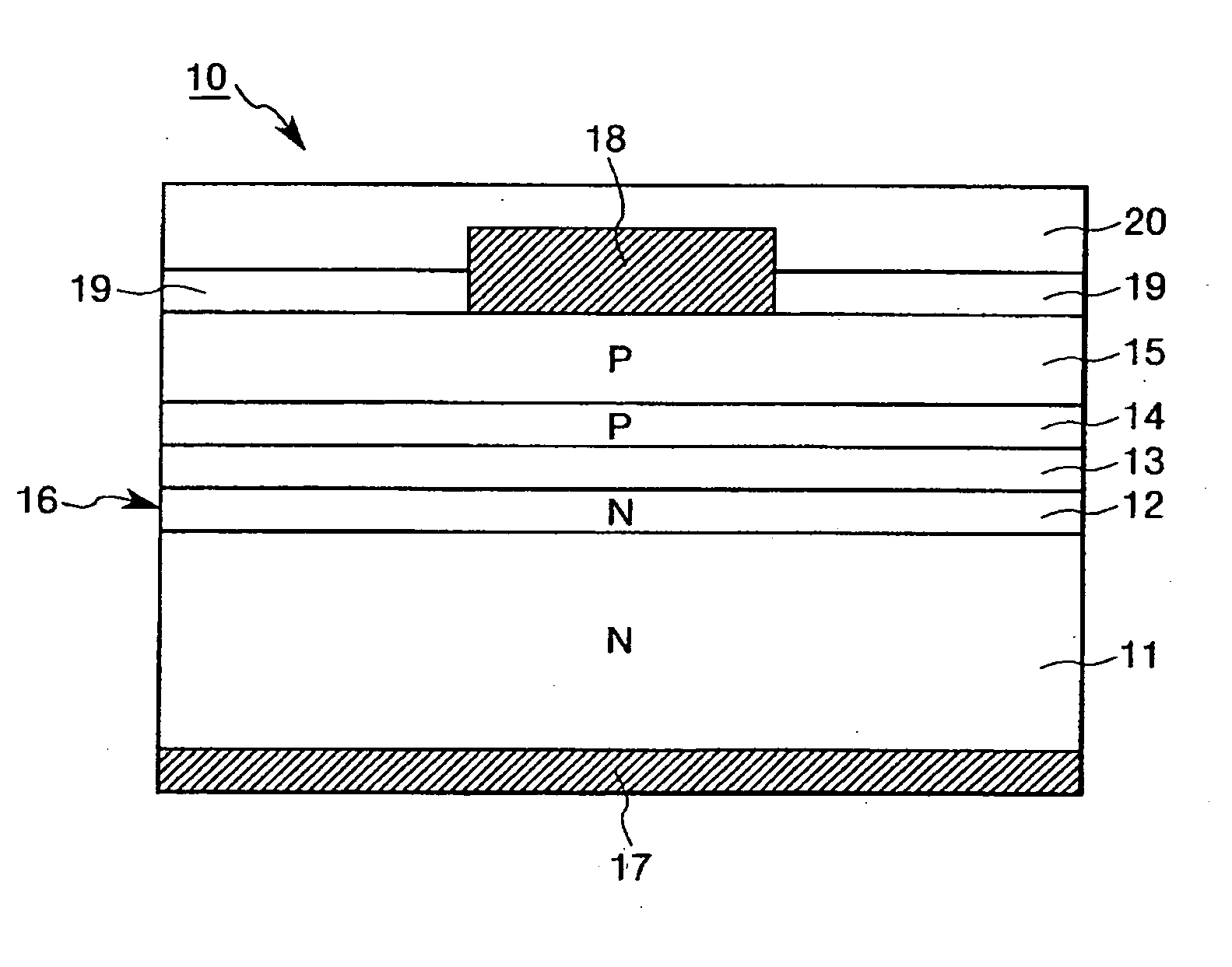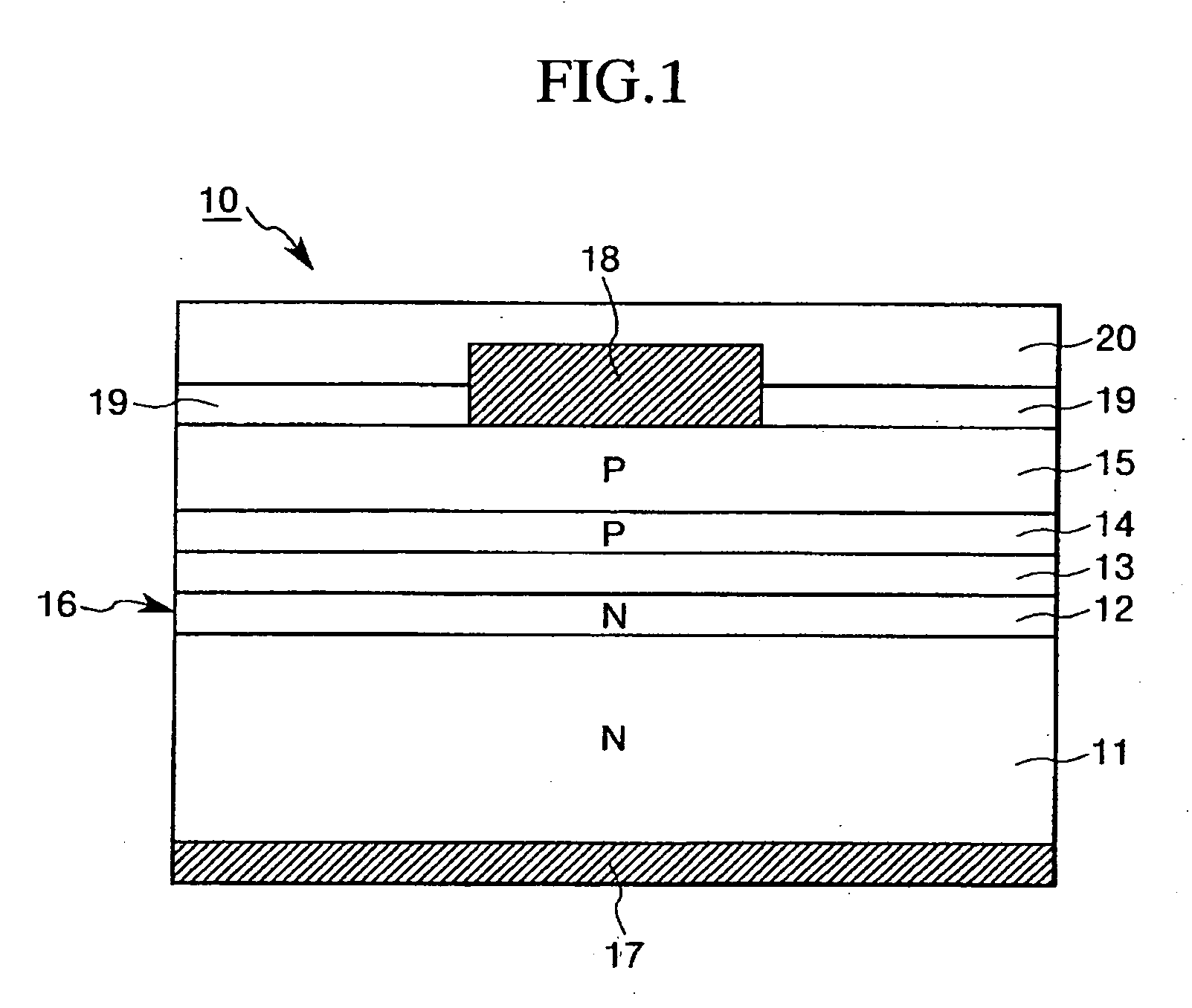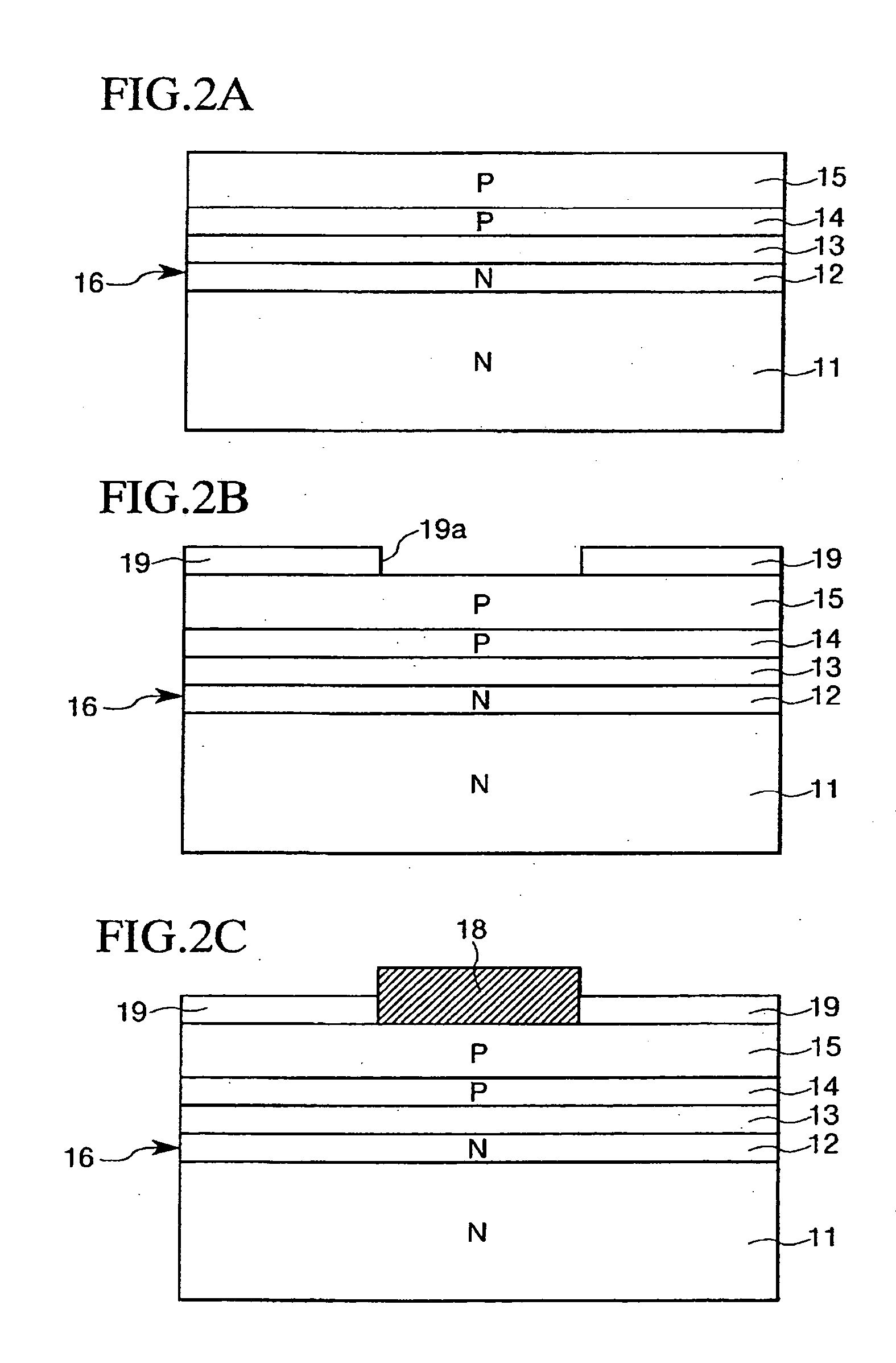Semiconductor light emitting element and fabrication method thereof
a technology of semiconductors and light emitting elements, applied in semiconductor lasers, lasers, solid-state devices, etc., can solve the problems of difficult dispersion, low light extraction efficiency, and difficult workability and repeatability, and achieve good workability and repeatability, and high light extraction efficiency
- Summary
- Abstract
- Description
- Claims
- Application Information
AI Technical Summary
Benefits of technology
Problems solved by technology
Method used
Image
Examples
Embodiment Construction
[0062] A semiconductor light emitting element according to the embodiment of the present invention will now be specifically explained with reference to the drawings. The following will explain, as an example, a case where a semiconductor light emitting element forms a light emitting diode.
[0063]FIG. 1 shows a cross-sectional view of a semiconductor light emitting element 10 according to the embodiment of the present invention. As shown in FIG. 1, the semiconductor light emitting element 10 according to the present embodiment comprises a semiconductor base 16 including an N-type substrate 11, an N-type auxiliary layer 12, an active layer 13, a P-type auxiliary layer 14, and a window layer 15. The semiconductor light emitting element 10 is formed of a cathode electrode 17 which is formed on one surface of the semiconductor base 16, and of an anode electrode 18, a light transmissive layer 19, and a protection layer 20 which are formed on the other surface thereof.
[0064] As shown in F...
PUM
 Login to View More
Login to View More Abstract
Description
Claims
Application Information
 Login to View More
Login to View More - R&D
- Intellectual Property
- Life Sciences
- Materials
- Tech Scout
- Unparalleled Data Quality
- Higher Quality Content
- 60% Fewer Hallucinations
Browse by: Latest US Patents, China's latest patents, Technical Efficacy Thesaurus, Application Domain, Technology Topic, Popular Technical Reports.
© 2025 PatSnap. All rights reserved.Legal|Privacy policy|Modern Slavery Act Transparency Statement|Sitemap|About US| Contact US: help@patsnap.com



